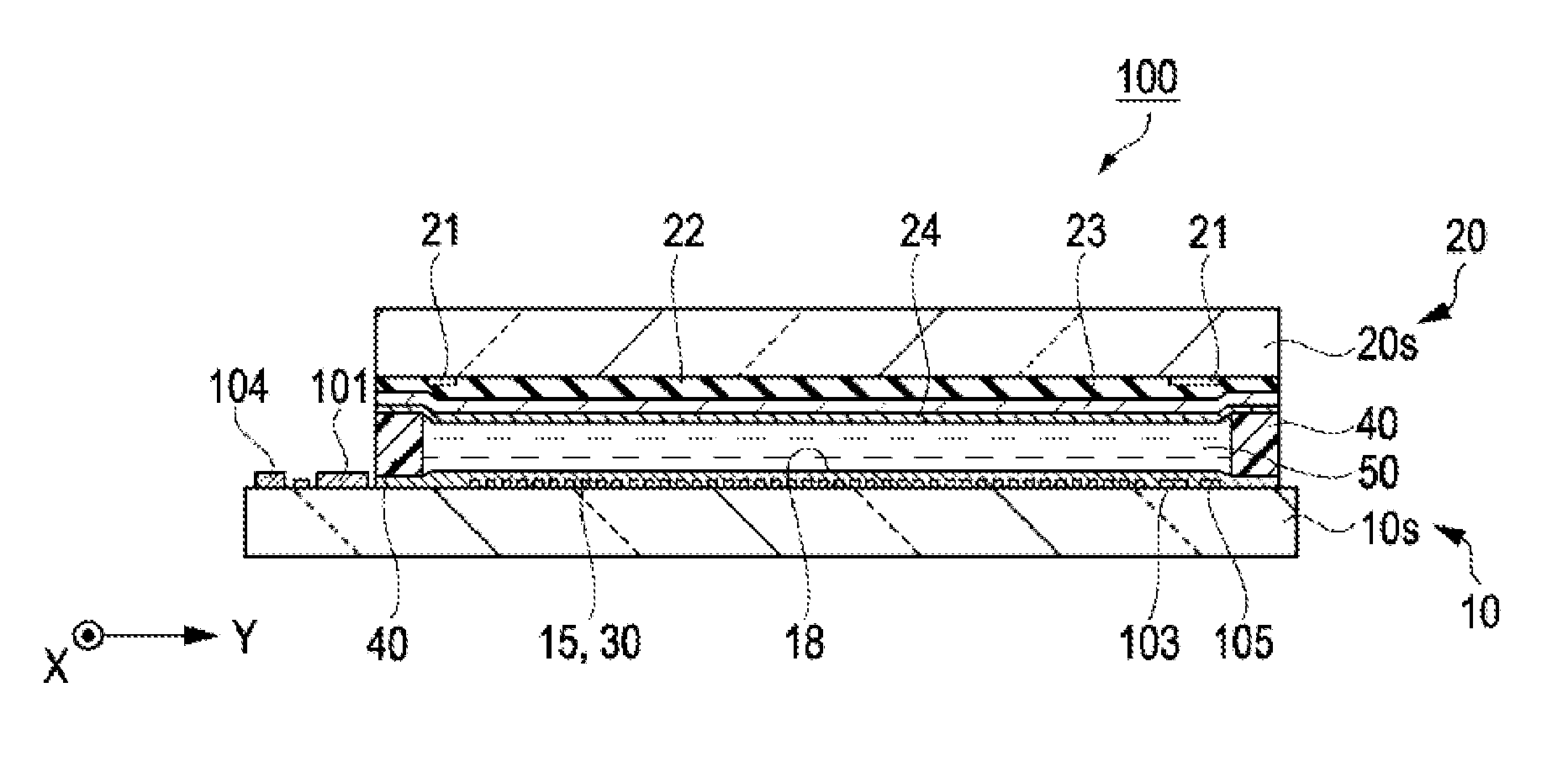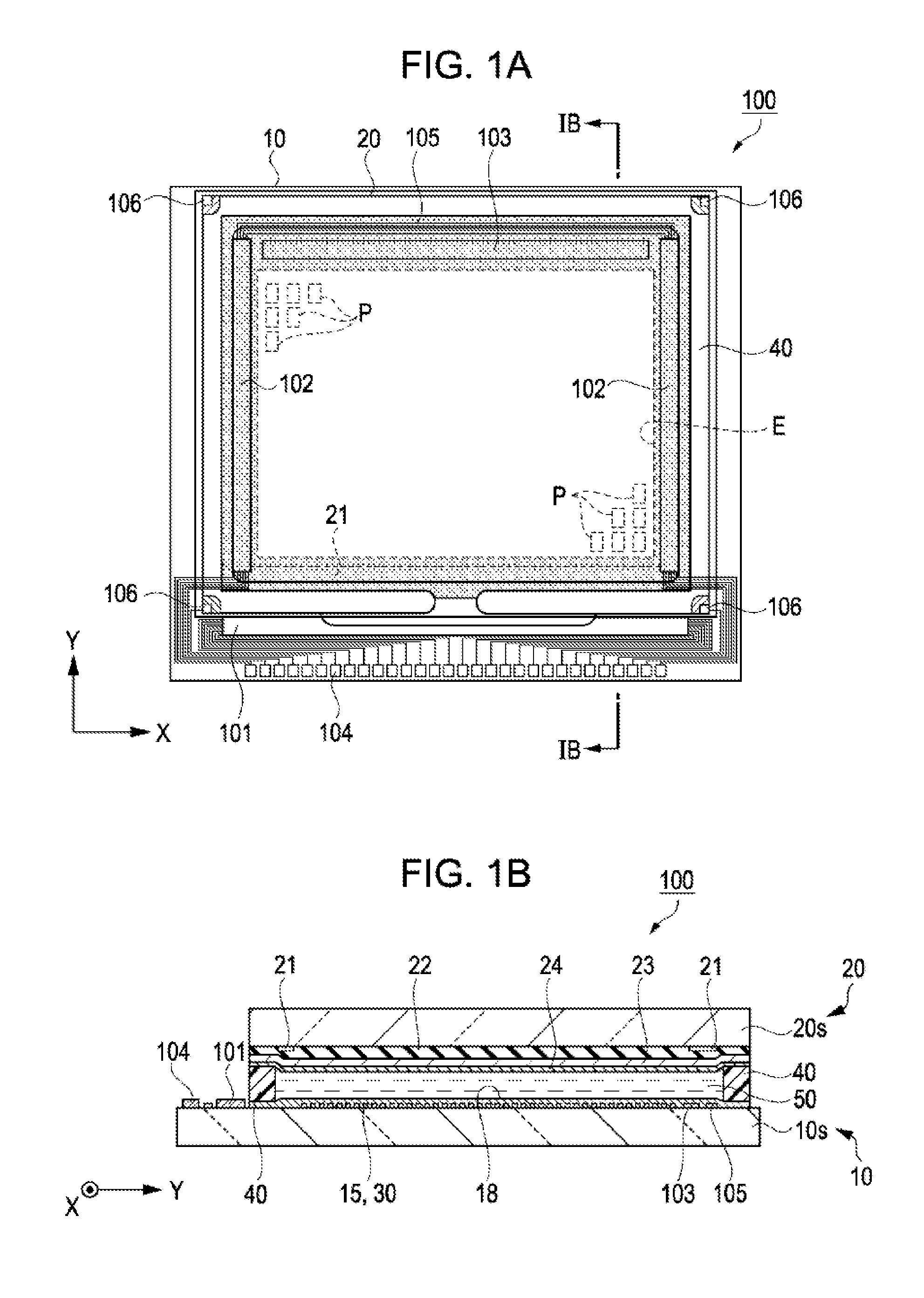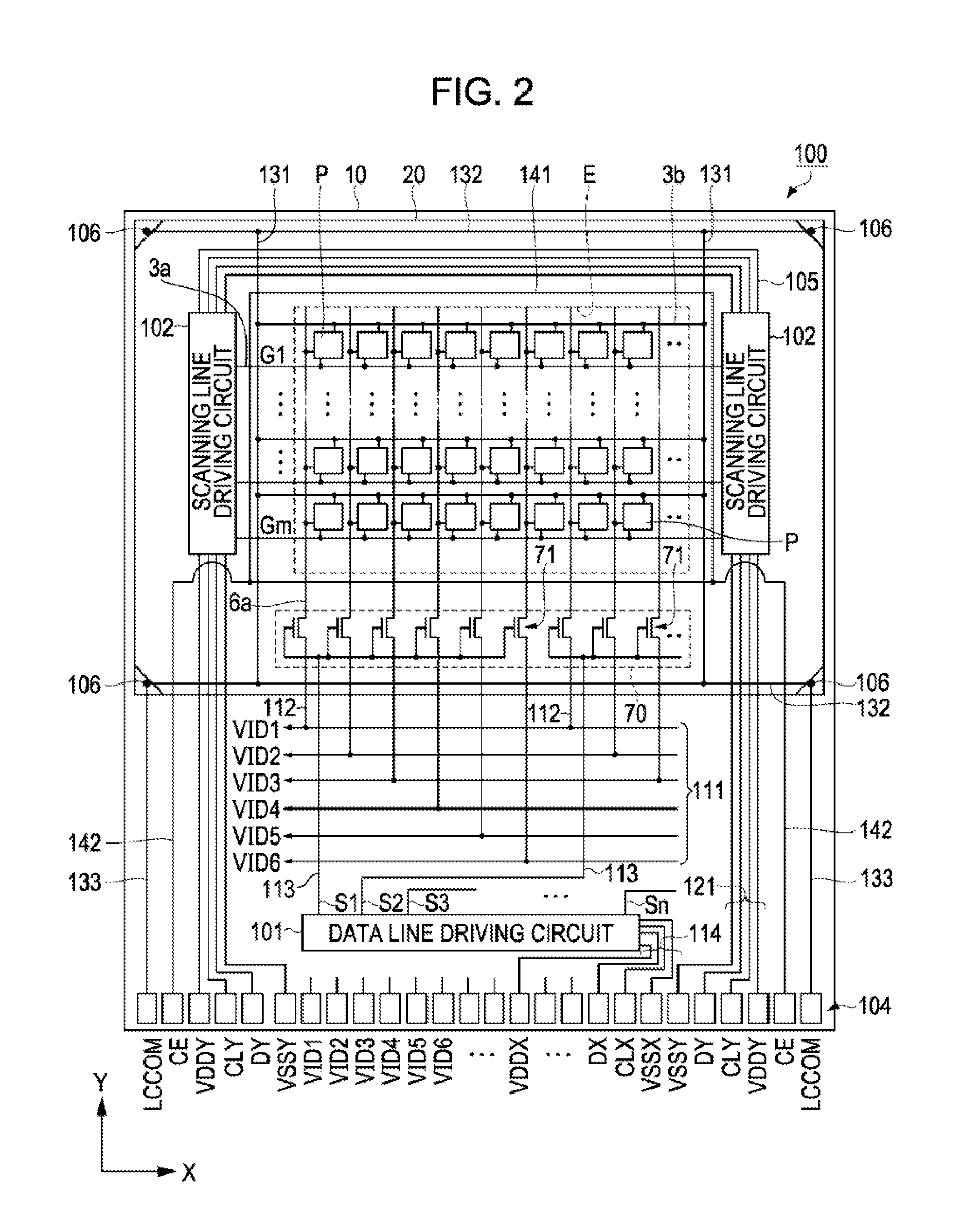Liquid crystal device and electronic apparatus
a liquid crystal device and electronic equipment technology, applied in non-linear optics, instruments, optics, etc., can solve problems such as display defects, display unevenness or burn-in, and display defects caused by eccentric locations of positive or negative ionic impurities, and achieve high reliability and reduce display defects
- Summary
- Abstract
- Description
- Claims
- Application Information
AI Technical Summary
Benefits of technology
Problems solved by technology
Method used
Image
Examples
first embodiment
[0062]In the embodiment, an active matrix type liquid crystal device provided with thin film transistors as switching elements of pixels will be described by way of example. The liquid crystal device may be appropriately used, for example, as an optical modulation element (a liquid crystal light valve) of a projection type display device (a liquid crystal projector) to be described later.
Liquid Crystal Device
[0063]First, a liquid crystal device of the embodiment will be described with reference to FIG. 1A to FIG. 3. FIG. 1A is a schematic plan view illustrating a configuration of the liquid crystal device, FIG. 1B is a schematic cross-sectional view illustrating a structure of the liquid crystal device taken along the line IB-IB of FIG. 1A, FIG. 2 is a circuit diagram illustrating an electrical configuration of the liquid crystal device, FIG. 3 is an equivalent circuit diagram illustrating an electrical configuration of a pixel, and FIG. 4 is a schematic cross-sectional view illustr...
example 1
[0116]FIG. 7A is a schematic cross-sectional view illustrating a connection line structure in an element substrate of Example 1, and FIG. 7B is a schematic cross-sectional view illustrating a modification example in disposition of a peripheral electrode and a connection line of Example 1.
[0117]As shown in FIG. 7A, in Example 1, in the connection line layer 12 of the peripheral area E3, a scanning line driving circuit connection line 121s (hereinafter, referred to as a positive potential connection line 121s) to which the reference potential (VSSY) is supplied (applied), and a scanning line driving circuit connection line 121d to (hereinafter, referred to as a positive potential connection line 121d) to which the driving potential (VDDY) is supplied (applied) are disposed. A connection line 131 for supplying (applying) the common potential (LCCOM) to the connection line layer 13 between the positive potential connection line 121s and the dummy pixel area E2 is disposed. In the same l...
example 2
[0125]FIG. 9 is a schematic cross-sectional view illustrating a connection line structure in an element substrate of Example 2 shown in FIG. 9. In Example 2, a range where the peripheral electrode 141 is provided is different from that of Example 1. Specifically, as shown in FIG. 9, the peripheral electrode 141 of Example 2 is formed in the same layer as the pixel electrode 15 such that the positive potential connection lines 121s and 121d provided in the connection line layer 12 overlaps with the connection line 131 provided in the connection line layer 13 in the plan view.
[0126]According to Example 2, the first electric field generated between the positive potential connection lines 121s and 121d and the pixel electrode 15 is blocked, and it is possible to raise the intensity of the second electric field generated between the peripheral electrode 141 and the pixel electrode 15. By the direct current potential applied to the peripheral electrode 141, one of the positive or negative...
PUM
| Property | Measurement | Unit |
|---|---|---|
| transmittance | aaaaa | aaaaa |
| transmittance | aaaaa | aaaaa |
| transmittance | aaaaa | aaaaa |
Abstract
Description
Claims
Application Information
 Login to View More
Login to View More - R&D
- Intellectual Property
- Life Sciences
- Materials
- Tech Scout
- Unparalleled Data Quality
- Higher Quality Content
- 60% Fewer Hallucinations
Browse by: Latest US Patents, China's latest patents, Technical Efficacy Thesaurus, Application Domain, Technology Topic, Popular Technical Reports.
© 2025 PatSnap. All rights reserved.Legal|Privacy policy|Modern Slavery Act Transparency Statement|Sitemap|About US| Contact US: help@patsnap.com



